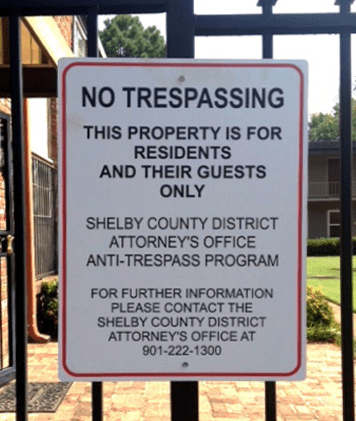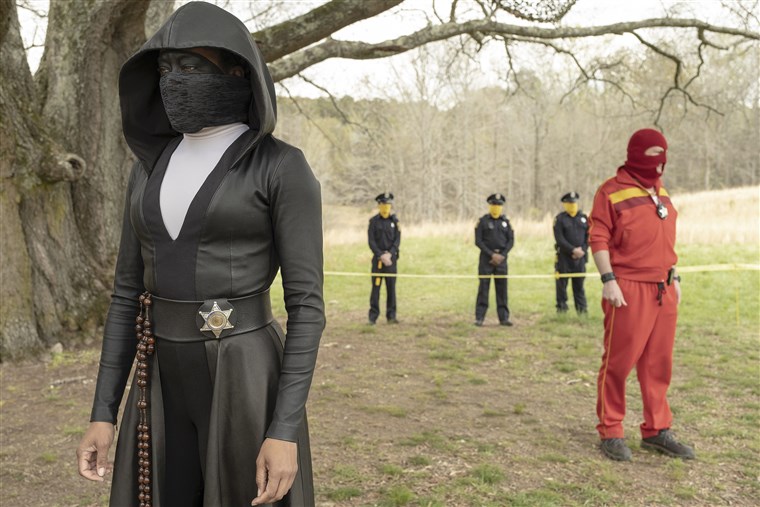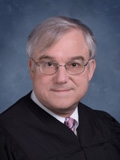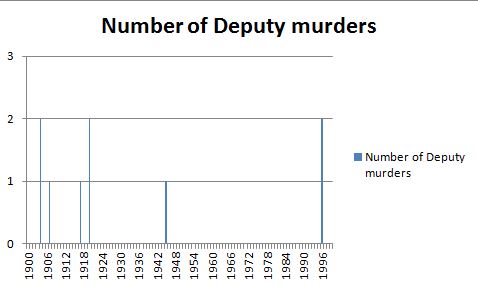Authorization of Agency (AoA) is a pair of processes at Memphis Police Department and the DA’s office, which are designed to circumvent provisions in the Tennessee criminal trespass law, TCA § 39-14-405. AoA is designed to enhance public safety by controlling unwanted citizens who access private business property.

We have written extensively about one AoA process, the MPD’s form AA 0306, which is summarized in the most recent blog. We provide links to our blogs and other documents at the end of this piece. We have not previously written about the second process, which is based on signage located mostly in apartment complexes, but we describe the second process here.
We recently discovered, via Open Records Request, the regulatory device used by MPD for AoA. It is section 52 of the Uniform Patrol Station Standard Operating Procedure, page 35.
Uniform Patrol Station SOP AoA Regulations
We provide the text of the FOIA we received from MPD below, with section headers inserted by us. It is the Uniform Patrol Station Standard Operating Procedure.
AoA UPSSOP Section 1: Definition of AoA

AoA UPSSOP Section 2: Advising the Target of AoA


AoA UPSSOP Section 3: LEO Witness and Complainant signature

AoA UPSSOP Section 4: Filing of AoA

AoA UPSSOP Section 5: AoA Verification for Arrest

AoA UPSSOP Section 6: Arrests and File maintenance

AoA UPSSOP Section 7: Appendices, omitted from FOIA.

About the AoA SOP.
We see numerous problems with the current implementation of AoA. As examples, section 1 confines AoA complainants to businesses only, and there were 112 AoAs (6.6%) for residence owners who were private individuals in our 2018 FOIA.
In section 2, the business owner must advise the AoA target, in the presence of an MPD witness, of the imposition of AoA. There is one alternative procedure provided involving the posting of a notarized affidavit. We received notification, in response to a FOIA request, that there are no such affidavits on file at MPD.
In Section 3, the business owner and the witnessing officer must sign and complete the AoA form at the local police station. The combination of sections 2 and 3 require one three-way meeting which must include the AoA target, which can be anywhere but is assumed to be at the alleged trespass location, and a second meeting and filing which must include the complainant and the original witnessing police officer, and must take place at the local MPD precinct.
We have an email from MPD Colonel Worthy, commander of Ridgeway precinct, emphasizing this inflexible procedure.
“Sir, you will have to give the a verbal order to the individual to not be on the property in the presence of an officer. Then we can fill out the form. You have to have the name of the officer and his IBM number. Then the form is to be completed at the station. If the form is completed before that step it is not valid…”
Of the 45 cases we have sampled, this procedure was not followed in a single instance. We are following up on interviewing additional AoA targeted individuals.
Section 3 also lists a number of data points which must be on the AoA. The majority of the 2,200 AoAs we have seen do not have all these data points, or the officers IBM# as required in the Colonel’s email.
The SOP contains numerous other requirements which are not followed, among them the requirement for annual purging of year-old AoAs. When we obtained 1677 AoAs via FOIA in mid-2018 with readable dates, 358 of them (6.6%) were dated 2016 or earlier and must have been more than a year old, and the 584 FOIAs for 2017 looked like the entire year’s worth of FOIAs.
We also have an email interchange between an attorney for an AoA targetted individual, from February 2017, who had to escalate to Bruce McMullen, City Attorney and City PR Ursula Madden in order to get an erroneous AoA removed. The procedure in the UPSSOP for correcting erroneous AoAs was apparently not applied or did not work, possibly because no-one was aware the procedure existed. This AoA target had to pay an attorney for redress, something not available to everyone.
In summary, it looks like the majority of AoAs on file are invalid because of defective procedures, and we would not be surprised if every AoA on file is defective in some way.
The other type of Authorization of Agency

The MPD AoA form AA0306 is clearly labeled Authorization of Agency and this matches the verbiage in the UPSSOP. The DA’s office frequently refers to another AoA mechanism. This is manifested in the form of signs frequently posted in apartment complexes, which state that the property is posted against trespass by anyone who is not a tenant or their guest. Here’s a Youtube video of Amy Weirich (2:46 minutes) describing these signs as AoA and conflating with the AA0306 forms.
These signs purport to allow the police to arrest an alleged offender without the notice required in the Tennessee criminal trespass law, TCA § 39-14-405.
In order for a premises to be posted under TCA § 39-14-405, the property must be entered in the No Trespass Public Notice List at the Tennessee Secretary of State. We have viewed this page repeatedly between 2017 and the date of writing, 12/1/2019, and have never seen a Memphis address posted in this database. Therefore we assume that all these AoA no trespass signs contravene the State trespass law and are invalid.
We have not yet received data on the use of both flavors of AoA in actual trespass arrests, but we are told, anecdotally, that hundreds of such arrests have been seen, and will post that information when we receive it.
Why was AoA under the radar for ten years?

We could find no public mention of AoA between 2007, when a blogger mentioned it, to 2017 when our FOIA produced the City blacklist, including 43 people on AoAs. We believe, anecdotally, that hundreds of trespass arrests were made, using both forms of AoA.
Only a small population knew about AoA, the AoA complainants, people to whom AoA had been marketed as possible complainants, some of the AoA targets, some MPD police, of which less than 10% actually created AoA forms, prosecutors and public defenders.
When you have secret police processes, you get secret police.
Public Defenders and AoA.
There are about 45 politically targeted individuals, who generally had private attorneys when they interacted with the criminal justice system.
All other instances of arrest for trespass with either flavor of AoA that we know of went through the Public Defender’s office. Sadly, the combined actions of the DA’s office and MPD have severely hampered the PD’s ability to defend AoA arrests.
PD’s workflow for AoA arrests.
Bear with us as we outline the PD’s workflow. When a person is arrested for criminal trespass, they are brought to 201 Poplar or Jail East and booked. Some time afterwards, during bankers’ hours, the defendant will be arraigned. At that time, if the defendant does not have funds for a lawyer, a public defender is appointed. The PD receives the jacket, containing various documents, including an affidavit of complaint and an arrest ticket from MPD, a bond recommendation, criminal history and others.
At this point, the PD may see a small photograph of the AoA document on the affidavit of complaint, which is reproduced at quarter size and can’t be read. So the PD knows there’s an AoA or a posted location but can’t see details. In order to get the AoA form, the PD would have to walk the couple of blocks to MPD HQ at 170 N. Main, go through security and wait at the public records counter on the 7th floor. PDs, who often have up to thirty cases per day, are limited to three police records per day. Restrictions on the data practically available to PDs has been progressively tightened over the years, not least when the MPD records counter moved from 201 Poplar to North Main.
If the PD is to take 45 minutes from their busy schedule, they’ll probably wait until the end of the day and do all the day’s AoAs together. There is not enough time in the day to get MPD records for every case. In most cases, as the defendant probably needs to be released to get to work, cases are settled for time served awaiting trial before the end of the day. First time defendants often accept a misdemeanor record to get back to their daily schedule. This is a problem if they get arrested again, as the trespass offense is taken into account when bail, diversion and sentence recommendations are decided. This is a slippery slope into a possible criminal career. AoA is a gateway into mass incarceration for many.
Hopefully PDs can use some of the information here to question the imposition of AoA in more cases. In the meantime, considering the workload on PDs, it is not surprising that they did not investigate and publicize the nature of AoA while it was under the radar.
Our current interest in AoA stemmed from its use in the City blacklist and the information we developed required hundreds of hours of research. Without the publicity generated by the Blacklist and the ensuing ACLU court case, the public might still be in the dark about AoA.
Summary
AoA has been an almost secret police process at MPD and the DA’s office since at least 2007. It has the appearance of having been heavily marketed by various public safety interests in the interim, resulting in heavy usage.
The availability of this secret tool was apparently attractive to the City, MPD and the Zoo when they desired to punish and harass political activists, after which law enforcement lost the advantage of this secret police process.
We believe that the 2,200 AoA targets include about 45 political actors and over 2,100 regular folks, who generally have been unable to mount a criminal defense against the numerous irregularities we outline here.
We are appending a links section as a resource. Anybody who is on an AoA, who has been notified they are not allowed at a certain location, or who has been arrested for criminal trespass where “authorization of agency”, AoA, no trespass signage, or “being on a list” should contact us. We will share your information with some attorneys we are working with, but with otherwise keep your information completely confidential and protected. You can also use our confidential contact option if you have AoA information but wish to be anonymous.
AoA Resource Links
All the information here is publicly available.
On our FTP server.
http://www.fnolan.com/A/A-List.pdf: A-list containing FOIA with, 43 political AoAs.
http://www.fnolan.com/AOA/files/AoA_analysis_spreadsheet_links_20180911_v02.xlsx: Indexed spreadsheet with about 1700 AoAs.
http://www.fnolan.com/AOA/ Directory listing for the raw files in the above spreadsheet.
http://www.fnolan.com/AO2/Publ_AoAs_20191010.xlsx: Indexed spreadsheet with 473 additional AoAs received in 2019
http://www.fnolan.com/AO2/ Directory listing for the raw files in the above spreadsheet.
Lagniappe
Finally, Shelby Co. Sheriff’s Office has announced it will shortly be starting its own AoA process.
Blogs.
Some of the information in the earlier blogs is inaccurate and was corrected in later blogs. E.g. I wrote that there was no MPD P&P for AoA in 2018, now we know from the current article that it is covered in UPSSOP.
https://memphistruth.org/2019/10/11/authorization-of-agency-update/ Blog about the recent 473 AoAs obtained in 2019.
https://memphistruth.org/2018/09/06/authorization-of-agency-mpd-invention/ Blog with the 1690+ AoAs obtained in the 2018 FOIA.
https://memphistruth.org/2018/09/11/authorization-of-agency-initial-analysis/ Additional analysis of the 2018 FOIA.
https://memphistruth.org/2018/02/26/blacklists-from-a-to-z-new-zoo-z-list/ Hunter Demster and Fergus Nolan receive an AoA at the Zoo.
https://memphistruth.org/2019/07/30/dan-rosson-placed-on-aoa-by-city/ Dan Rosson, animal rights activist, placed on AoA at Memphis Animal Shelter.
https://memphistruth.org/2019/07/26/rodney-fisher-fired-by-mpd-via-aoa/ Rodney Fisher takes video of ab MPD cop informing him he is on an AoA at his job at NIKE.
https://www.facebook.com/100005058287008/videos/1256158231229441/ Rodney’s video.
https://memphistruth.org/2017/02/08/mpd-has-activist-list/ A-list breaking news with 43 political AoAs.
http://www.paulryburn.com/blog/2007/07/18/authorization-of-agency/ 2007 first public AoA mention by blogger Paul Ryburn in 2007.
Other
Various public sites and reference material
TCA 39-14-405: Tennessee Criminal Trespass Law
No Trespass Public Notice List at Tennessee Secretary of State
MPD Policy and Procedures Manual
Safeways Apartment AoA scheme.

— concluded —






 Our June award winner is Judge Chris Craft, Shelby Criminal Court Division VIII. We outline his bio towards the end of this piece, but right now we’re going to jump into why Craft gets the Hammer Award.
Our June award winner is Judge Chris Craft, Shelby Criminal Court Division VIII. We outline his bio towards the end of this piece, but right now we’re going to jump into why Craft gets the Hammer Award.



 “April 10th, 2019 – An attorney believed to be representing the defendant pointed his finger at her and said, “Keep quiet!” as she was attempting to speak to Judge Craft and request a new attorney. When it came time for her case, the defendant wanted to be heard. After her attorney painted her as mentally incompetent, Judge Craft let her speak. She explained that there had been no communication between her and her attorney, and that she’s being ignored. As you can imagine, this is her only opportunity to advocate for herself — particularly since her attorney wasn’t. She had a difficult time staying quiet, but was never disrespectful in my opinion. After Judge Craft heard her out, there was more she wanted to say. However Judge Craft appeared annoyed at this point and said, “I’ll give you 10 days in jail for every word you say”. The defendant was quiet.”
“April 10th, 2019 – An attorney believed to be representing the defendant pointed his finger at her and said, “Keep quiet!” as she was attempting to speak to Judge Craft and request a new attorney. When it came time for her case, the defendant wanted to be heard. After her attorney painted her as mentally incompetent, Judge Craft let her speak. She explained that there had been no communication between her and her attorney, and that she’s being ignored. As you can imagine, this is her only opportunity to advocate for herself — particularly since her attorney wasn’t. She had a difficult time staying quiet, but was never disrespectful in my opinion. After Judge Craft heard her out, there was more she wanted to say. However Judge Craft appeared annoyed at this point and said, “I’ll give you 10 days in jail for every word you say”. The defendant was quiet.”









 We can calculate some probabilities. The probability of a deputy being killed in any given year, P(A) is 9/100 or 0.9. The probability of a second murder, P(B|A) in a given year is 8/100, because one of the murders is already counted. The probability of two deputy murders in the same year, by
We can calculate some probabilities. The probability of a deputy being killed in any given year, P(A) is 9/100 or 0.9. The probability of a second murder, P(B|A) in a given year is 8/100, because one of the murders is already counted. The probability of two deputy murders in the same year, by 



 Earley Story AKA Earlie Story is a soft-spoken gentleman in his mid sixties with a narrative straight out of a mid-20th century crime drama.
Earley Story AKA Earlie Story is a soft-spoken gentleman in his mid sixties with a narrative straight out of a mid-20th century crime drama.